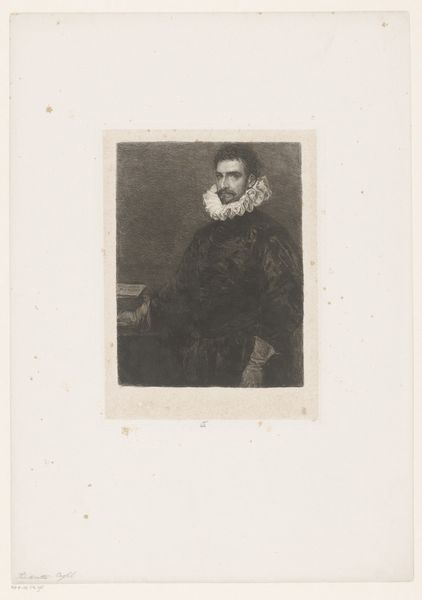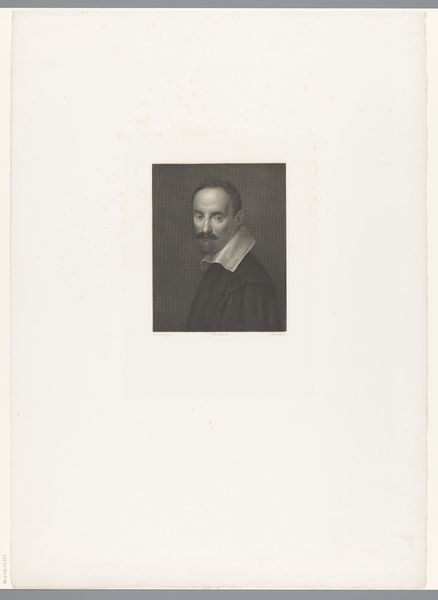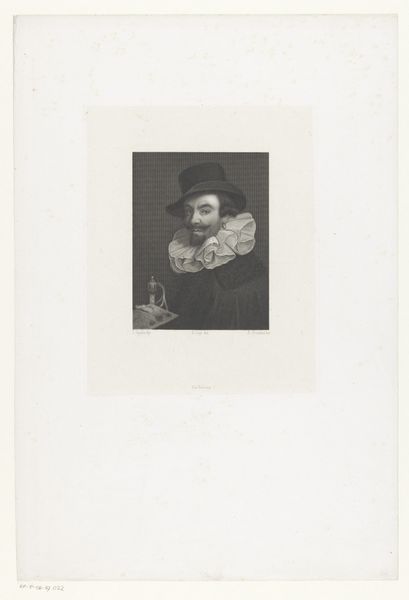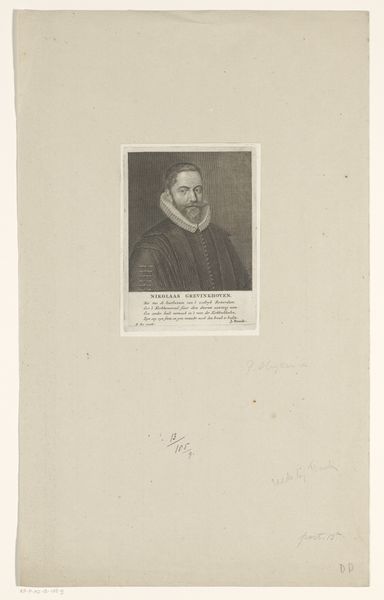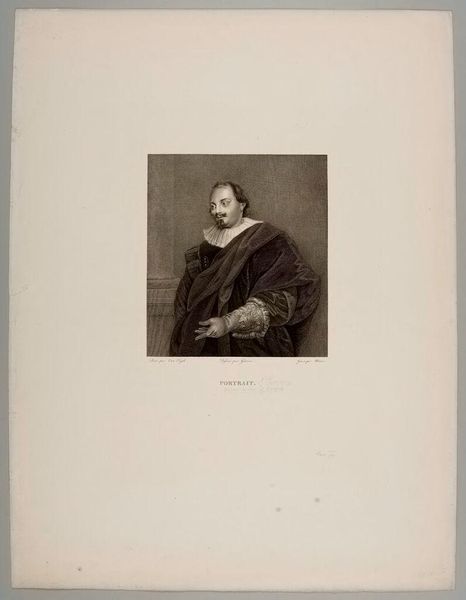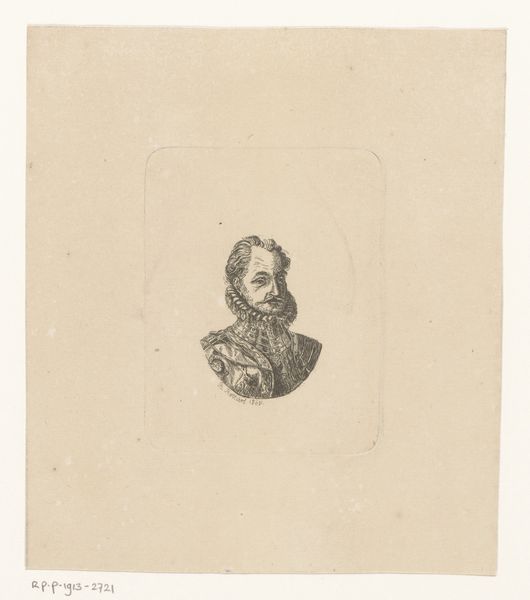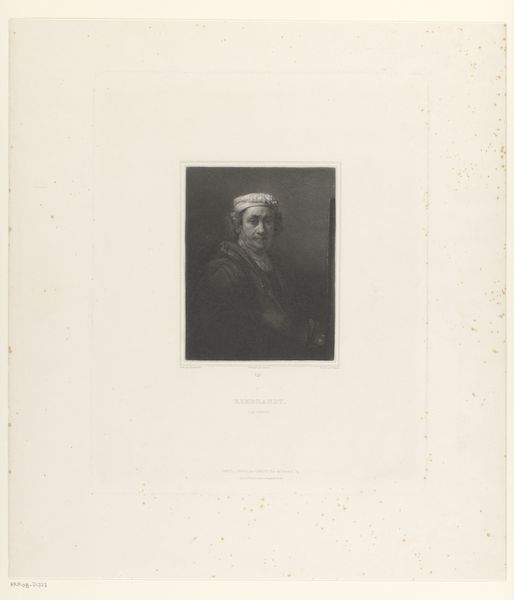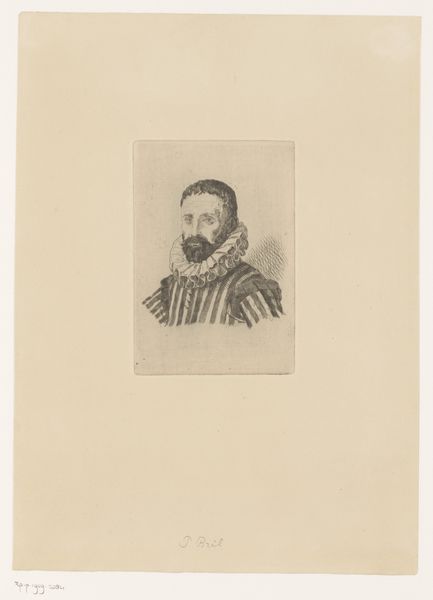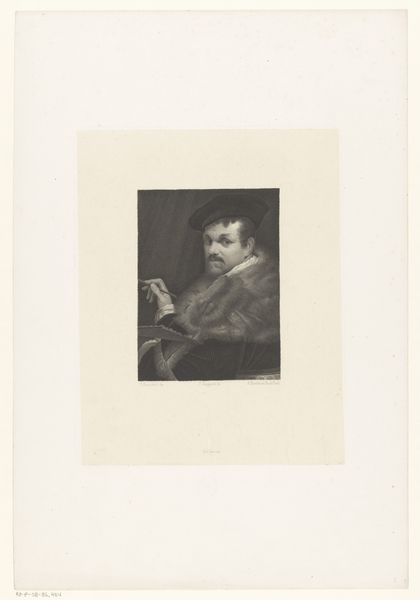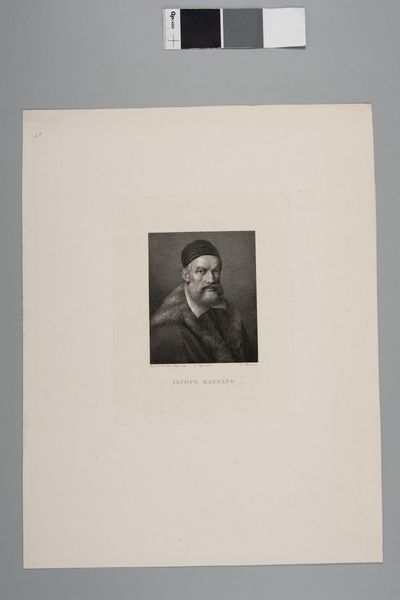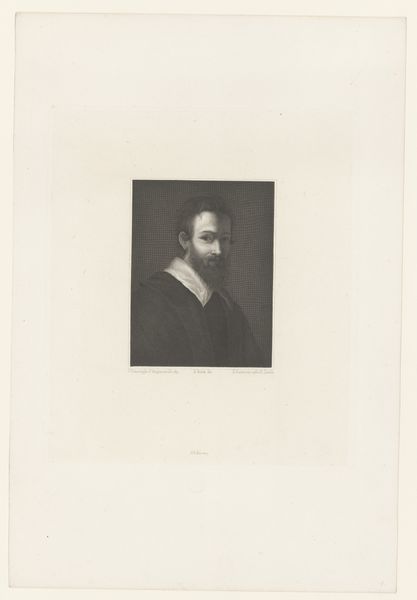
print, engraving
#
portrait
# print
#
history-painting
#
engraving
Dimensions: height 339 mm, width 258 mm
Copyright: Rijks Museum: Open Domain
Curator: Let’s have a look at this "Portret van schilder Leandro Bassano" or "Portrait of the painter Leandro Bassano". It is an engraving done between 1813 and 1883, attributed to Giuseppe Fusinati. What is your immediate impression? Editor: Austere, even melancholic. The subject is quite dark and there’s a sense of interiority. It looks like a glimpse into the soul. Curator: Interesting, the engraving as a print allows a replication, widening consumption among different audiences. The material allows accessibility. But what of the signs this artist holds in the image? Editor: Absolutely, consider his gaze! Direct, yet contemplative, suggesting the weight of creative thought and introspection that many people have across all fields. The high collar could imply not only status but also a closing off from the outside world. Curator: The collar itself becomes a marker of professional identity. A fascinating way to literally and figuratively frame the artist, yes? Consider the labour involved. Engraving requires skill, repetition, and precise hand movements. And the paper? The ink? All telling of resources needed for the arts! Editor: Of course, but consider also the layered meaning within portraiture itself. The book he holds hints at learning and erudition. It presents not just his likeness, but the *idea* of an artist, deeply invested in history. Curator: I find myself circling back to the engraving, how a singular object of art creates reproducible versions of artists and, at that moment in history, helps support Fusinati, the artist, if the consumer wants this piece of art. This shows more than Leandro's individual artistic merit and gives the artist an income. Editor: Perhaps. To me, the way he holds the book to his chest is very telling. In holding this book the subject becomes synonymous with knowledge. And the darkness around the character further draws in all who observe this artist. A simple technique to emphasize his complexity. Curator: That’s a solid symbolic interpretation, viewing the book as knowledge instead of just looking at how Fusinati's ability to market towards the intellectual helps his income. Editor: We can both appreciate it for our views. That, alone, speaks to the power of art in the era and how many ways audiences find themselves absorbing information.
Comments
No comments
Be the first to comment and join the conversation on the ultimate creative platform.
